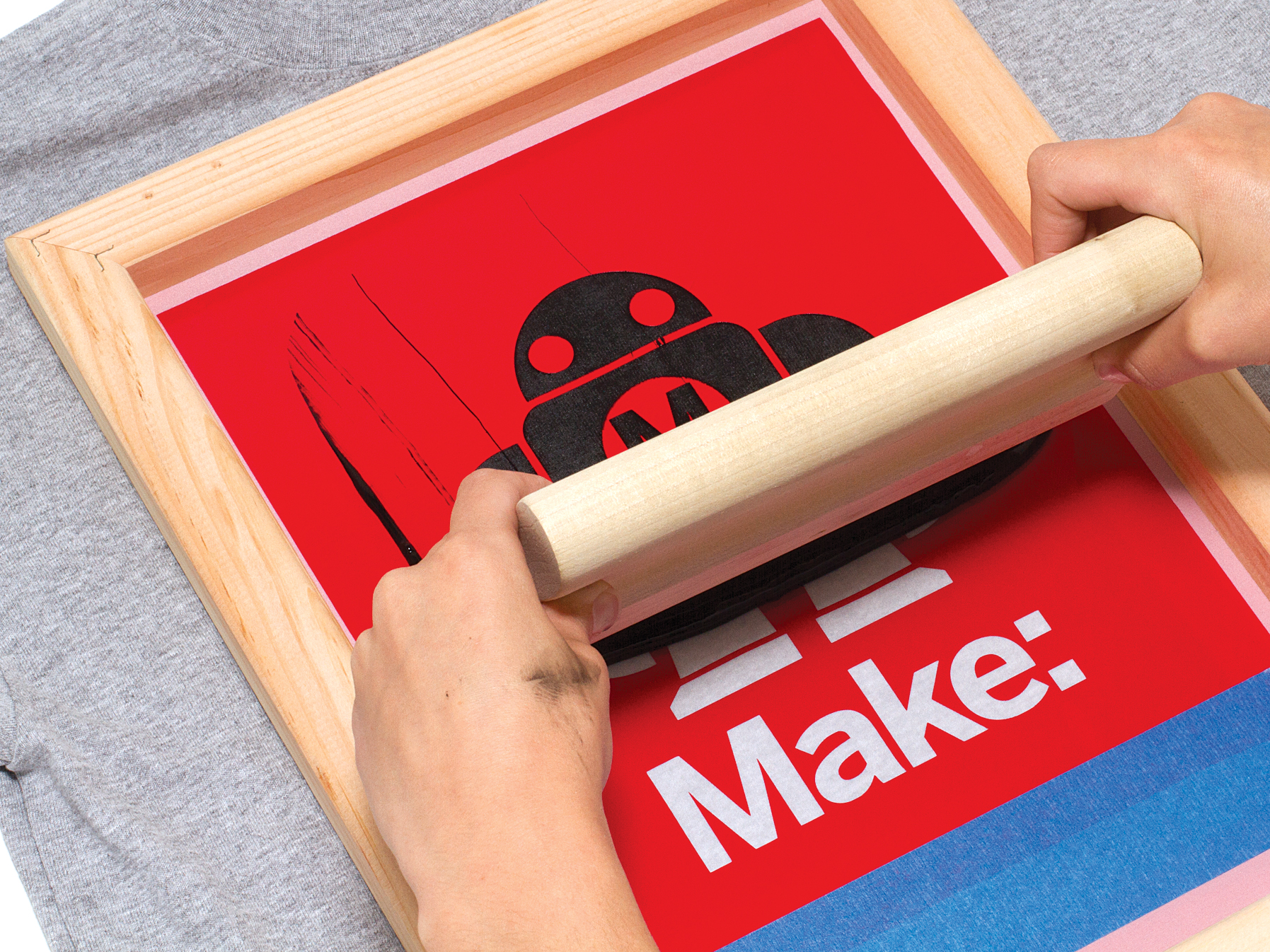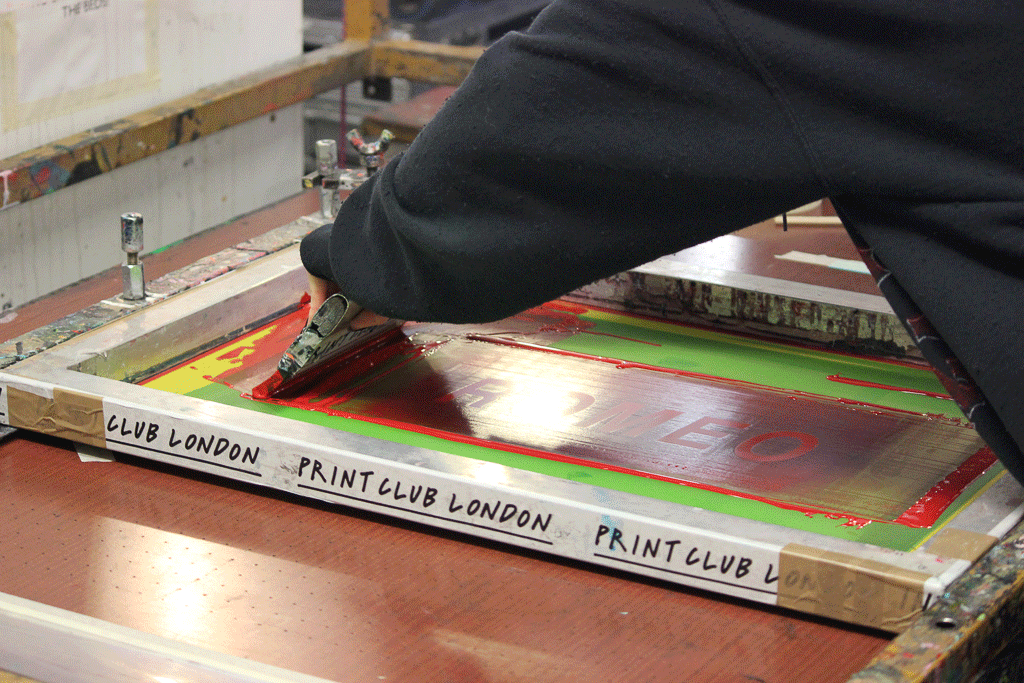ChatGPT said: 10:9 Design near me: how to locate the best screen printing services locally
Discover the Different Sorts Of Screen Printing Techniques for Your Following Task
Screen printing supplies a varied series of methods that can enhance any imaginative project. From conventional techniques like serigraphy to contemporary advancements such as direct-to-garment printing, each strategy has its unique advantages. Specialized alternatives, including metal and eco-friendly inks, present also much more opportunities. Understanding these techniques can substantially affect the last end result. However, the challenge exists in choosing one of the most ideal technique for specific needs and preferred impacts. What aspects should one think about?

The Fundamentals of Screen Printing
Screen printing might seem complex, it is fundamentally a simple procedure that entails moving ink through a mesh screen onto different surface areas. The method begins with the development of a pattern, which specifies the style to be published. This stencil is affixed to a mesh screen, typically constructed from polyester or nylon. Once the pattern remains in location, ink is used to the screen and pushed through the mesh utilizing a squeegee, causing the preferred pattern being printed on the underlying material.
Screen printing can be performed on a large range of substrates, consisting of plastic, material, and paper, making it a versatile choice for various tasks. The process enables for elaborate styles and vibrant colors, making it preferred in markets such as art, style, and advertising. Recognizing these fundamentals furnishes individuals with the fundamental understanding called for to explore more sophisticated methods in screen printing.
Traditional Screen Printing Techniques
Traditional screen printing techniques have actually been used for centuries, preserving the workmanship and creativity of this method. This technique utilizes a mesh screen to transfer ink onto a substratum, such as material or paper, allowing for vivid and durable designs. The procedure starts with developing a stencil, which blocks particular locations of the screen to manage where the ink will be used.
One popular strategy is serigraphy, frequently made use of for minimal editions and creative prints. One more is the use of water-based inks, which are environmentally friendly and offer a soft feel on fabrics - 10:9 Design Company. In addition, standard techniques can consist of hand-operated printing, where craftsmens apply ink with a squeegee, making certain accuracy and focus to detail
These strategies continue to be valued in the market for their tactile top quality and the special textures they create, appealing to both developers and consumers who appreciate the heritage of screen printing.
Digital Screen Printing Innovations
As the need for faster production and customization in the printing industry has risen, electronic screen printing advancements have arised as a game-changer. This modern technology blends conventional screen printing techniques with electronic processes, permitting for quick prototyping and complex styles that were previously hard to achieve. One significant advancement is the introduction of direct-to-garment (DTG) printing, which assists in high-grade, full-color prints on numerous textiles without the need for displays. Additionally, improvements in ink solutions have actually resulted in environmentally friendly choices that maintain lively shades while decreasing ecological influence. Making use of automated systems better improves production, minimizing labor expenses and enhancing precision. These innovations not just accommodate tiny set orders and individualized styles but likewise enable for quicker turnaround times, making them optimal for companies focused on meeting customer needs in a busy market. Digital screen printing, consequently, represents an important advancement in the domain of printing strategies.
Specialty Screen Printing Techniques
Discovering specialized screen printing techniques discloses a diverse array of techniques that push the limits of creativity and performance in the printing sector. Amongst these, glow-in-the-dark inks supply a special aesthetic impact, making styles come to life in low-light problems. Metal inks, recognized for their shimmering finish, add a touch of deluxe to published materials. Another ingenious technique is discharge printing, which eliminates color from the fabric rather than including ink, resulting in a soft, vintage feel. High-density printing develops an increased appearance on the surface area, improving tactile interaction. Additionally, water-based inks are acquiring appeal for their vibrant shades and reduced ecological impact. Each of these specialized techniques provides to particular style requirements, enabling artists and brands to develop standout items that resonate with their target markets. By leveraging these approaches, companies can raise their screen printing jobs to brand-new elevations, making sure memorable impressions.
Eco-Friendly Screen Printing Options
Environment-friendly screen printing alternatives are obtaining traction as the market shifts towards sustainability. Lasting ink choices and the usage of biodegradable materials are essential elements in minimizing the ecological effect of the printing process. By adopting these techniques, screen printers can add to a more sustainable click here to find out more future while keeping high-grade outcomes.
Sustainable Ink Selections

Biodegradable Materials Usage
As the screen printing industry develops, the consolidation of naturally degradable materials is becoming progressively important for eco aware practices. Developers and manufacturers are currently discovering inks and substrates made from natural, renewable energies that break down more successfully than standard equivalents. These biodegradable alternatives lower plastic waste and decrease environmental impact, aligning with the expanding need for lasting products.
Usual instances include water-based inks and organic cotton textiles, both see this page of which minimize damaging chemicals and advertise eco-friendliness. Brand names that embrace these materials frequently improve their market allure, bring in consumers who prioritize sustainability. As understanding of ecological issues proceeds to climb, the change in the direction of biodegradable materials in screen printing is most likely to gain momentum, fostering a greener market criterion.
Picking the Right Technique for Your Job
Exactly how can one figure out the most suitable screen printing method for a particular job? The decision hinges on a number of elements, including the product to be published on, the intricacy of the style, and the preferred manufacturing quantity - 10:9 Design Texas. Direct-to-garment printing is perfect for detailed designs with many shades, while conventional screen printing stands out for bigger runs of simpler graphics.
Additionally, factor to consider of the end-use of the published thing is vital. For outside applications, techniques that supply toughness and weather resistance, such as plastisol ink, might be favored. Conversely, environmentally-conscious jobs may gain Related Site from eco-friendly products or water-based inks.
Inevitably, recognizing the task's one-of-a-kind needs enables an educated option, guaranteeing both aesthetic appeal and practical long life. By examining design intricacy, material compatibility, and manufacturing range, one can efficiently choose the most appropriate screen printing strategy to satisfy their project's objectives.
Frequently Asked Concerns
What Is the Background of Screen Printing?
Screen printing came from ancient China around 1000 ADVERTISEMENT, developing via Japan and Europe. By the 20th century, it ended up being preferred in industrial art and style, transforming just how designs were generated and dispersed globally.

How Do I Prepare Art Work for Screen Printing?
To prepare art work for screen printing, one need to ensure high resolution, utilize an appropriate color mode, produce different layers for each and every shade, and transform text to outlines, assuring compatibility with the printing procedure and desired outcome.
What Products Are Best for Screen Printing?
The very best materials for screen printing include high-quality inks, sturdy displays, and suitable substrates like cotton, polyester, or blends. Furthermore, using ideal solution and squeegees can improve the printing process and last results.
Can I Evaluate Publish at Home?
Yes, screen printing in your home is feasible. With the best materials, setup, and strategies, individuals can create premium prints. Nonetheless, mindful factor to consider of work space and devices is important for successful results.

What Are Usual Blunders in Screen Printing?
Usual blunders in screen printing include improper direct exposure times, insufficient ink uniformity, imbalance of screens, inadequate cleansing of products, and neglecting to test prints. These mistakes can endanger the top quality and accuracy of the last product.
Screen printing might appear facility, it is fundamentally an uncomplicated process that involves moving ink through a mesh screen onto different surface areas. As the demand for faster manufacturing and customization in the printing market has actually risen, digital screen printing innovations have arised as a game-changer. Checking out specialty screen printing techniques discloses a varied selection of methods that push the boundaries of creative thinking and capability in the printing market. The ideal products for screen printing consist of top notch inks, long lasting screens, and appropriate substrates like cotton, polyester, or blends (10:9 Design near me). Common errors in screen printing consist of improper exposure times, insufficient ink uniformity, misalignment of displays, inadequate cleansing of materials, and ignoring to test prints